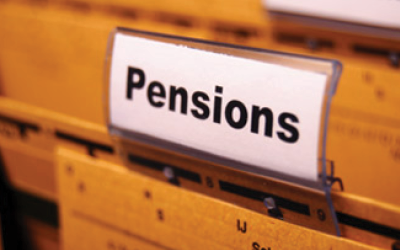If you are in receipt of Centrelink or DVA benefits, important changes to deeming rules will come into effect on 1 January 2015 which may have a significant impact on you. The good news is, with some planning, you still have time to avoid this.
An Account Based Pension (ABP) is a form of regular income that you receive in retirement or when you reach preservation age that is paid out of your super fund. At the moment an attraction of an ABP is that it is not included under the Incomes Test when assessing Centrelink or DVA entitlements. However, for those who commence an ABP from 1 January 2015, the government will apply a ‘deeming rate’ to the income you receive when assessing against the Incomes Test.
So how are Account Based Pensions (ABP) assessed against the Incomes Test now?
At the moment, ABPs are not fully assessed against the Incomes Test. The assessable portion of a pension is reduced by an amount based on the return of your super fund. This is determined at the commencement of the ABP and is based on the account balance and life expectancy.
Account Balance / Life Expectancy
As an example, Bob, a 63 year old single male is looking at commencing a $450,000 ABP in October this year. At that age, the government says Bob has a life expectancy of 20.14 years. Therefore, the annual pension payment that is not assessed is $22,343 p.a. (i.e. $450,000 / 20.14). So if he elects to take the minimum pension of $18,000, none of that income is currently assessable under the Incomes Test.
Post 1 January 2015 Deeming Rules
Under the new deeming provisions, all financial investments, basically the balance in your super fund, are assumed to earn a certain rate of income as shown in Table 1, regardless of the return that is actually generated.
| Client |
Threshold* |
Deeming Rates* |
| Single |
Up to and including $48,000 |
2.0% |
| Above |
3.5% |
| Member of a couple |
Up to and including $79,600 (combined) |
2.0% |
| Above |
3.5% |
| Member of allowee couple |
Up to and including $39,800 |
2.0% |
| Above |
3.5% |
*Rates and thresholds are effective as at August 2014
In our example above, if Bob commenced his ABP from 1 January 2015, the amount assessable under the Incomes Test from his $450,000 super fund will be $15,030 (i.e. $0-48,000 at 2%, with the balance at 3.5%). Not only do the deeming provisions not recognise the actual return on the super fund, nor does it take into account how much pension is being paid out by the ABP.
Will you be affected?
If you expect to commence an ABP on or after 1 January 2015 you will be subject to the new deeming rates. Whether it will affect your Centrelink benefits will be determined by three factors.
- Whether you are currently in receipt of a Centrelink or DVA payment;
- If you currently satisfy the Assets Test; and
- The amount of pension you expect to draw from your ABP.
There are instances where you may actually be better off under the deeming provisions. For example, those taking a pension well in excess of their non-assessable pension will benefit from the changes.
If you think it’s likely you will be negatively affected by these changes some straightforward financial planning may help you. You might be able to commence an ABP prior to 1 January 2015. Also, for those who have been considering moving from one ABP provider to another, it could be advisable you do so before 1 January 2015, as moving from one provider to another is considered a new ABP and will be assessed under the deeming provisions.
We are the first to acknowledge that these provisions can be complicated and changes can make things even less certain. So, you may want to speak with a financial planner to work out how the upcoming changes may affect you and what you can do about it.






